Battle of New Orleans
Discover how American forces achieved a decisive victory in the final major battle of the War of 1812!
What Was the Battle of New Orleans?
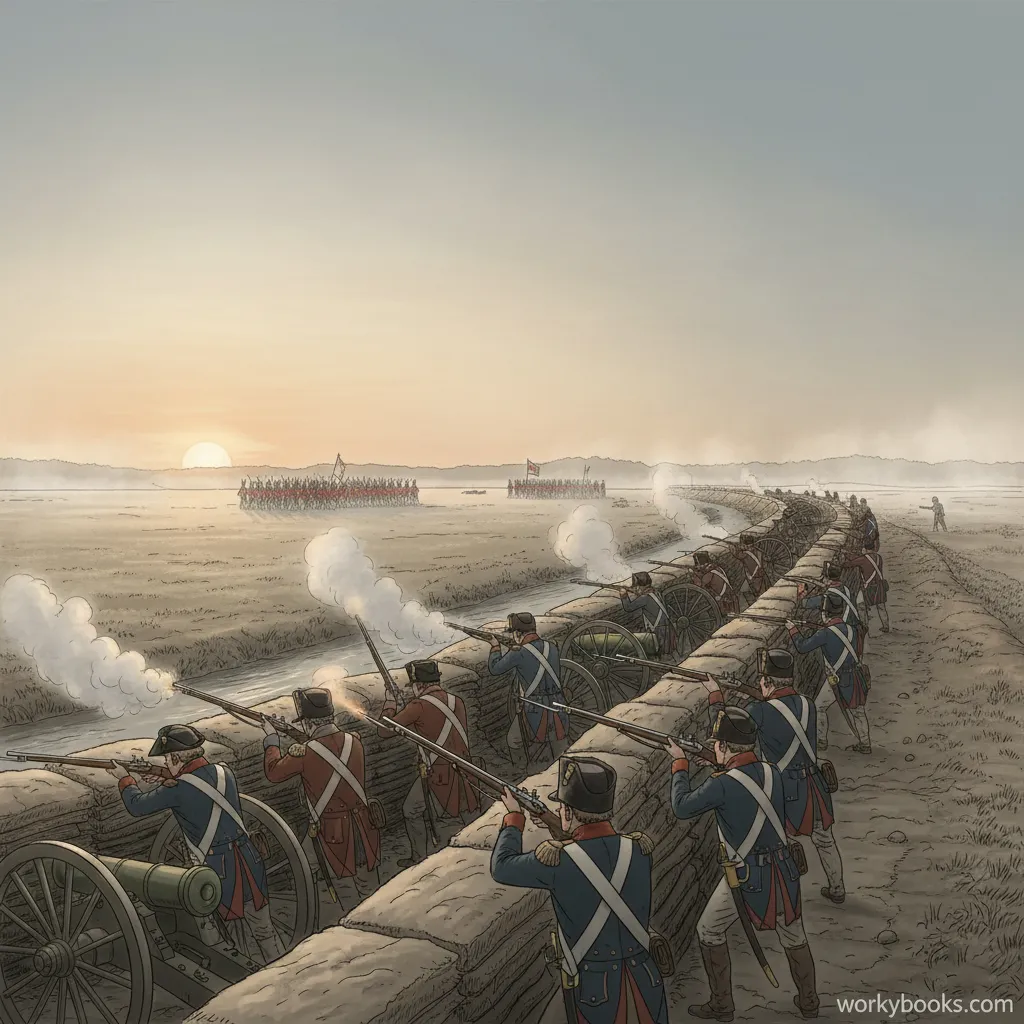
The Battle of New Orleans was the final major battle of the War of 1812, fought between American forces led by General Andrew Jackson and the British Army. The battle took place from January 8 to January 18, 1815, near New Orleans, Louisiana. Despite being outnumbered, American forces achieved a decisive victory that boosted national pride.
Interestingly, the battle occurred after the Treaty of Ghent had been signed, ending the war. However, news of the treaty had not yet reached North America, so both sides continued fighting. The American victory at New Orleans made Andrew Jackson a national hero and helped shape American identity.
Did You Know?
The Battle of New Orleans was the greatest American land victory of the War of 1812. American forces suffered only about 60 casualties, while the British had over 2,000!
The War of 1812
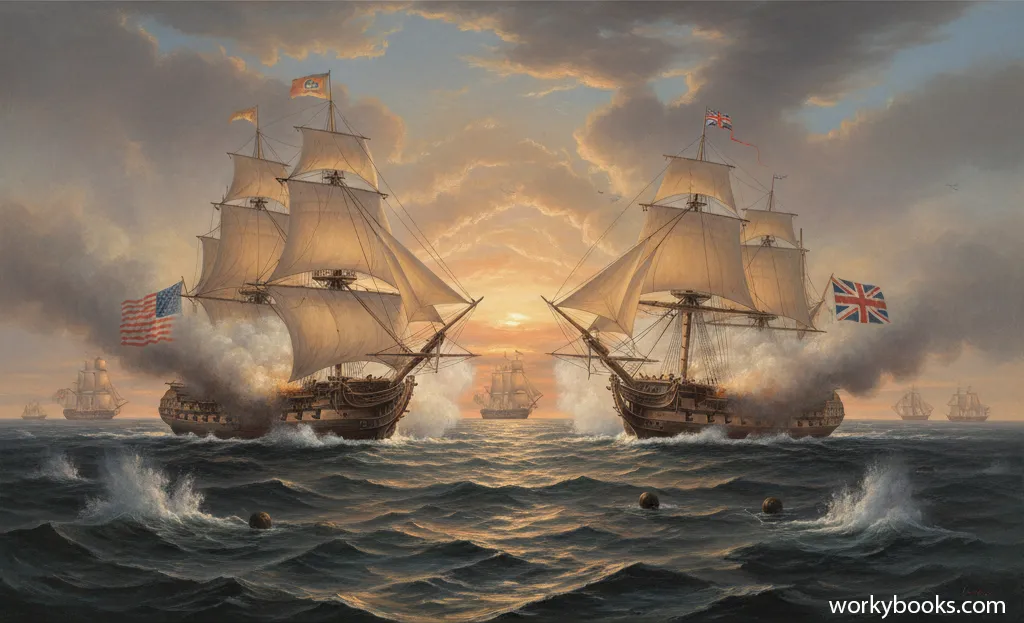
The War of 1812 was a conflict fought between the United States and Great Britain from 1812 to 1815. The war had several causes:
- British interference with American trade
- British impressment of American sailors (forcing them to serve in the British Navy)
- British support for Native American tribes resisting American expansion
- American desire to expand territory into Canada
The war was essentially a stalemate, with neither side achieving its main objectives. However, the American victory at the Battle of New Orleans gave the United States a psychological advantage and helped establish the country as a legitimate power on the world stage.
War Begins
United States declares war on Great Britain
British Attacks
British burn Washington D.C., but fail to capture Baltimore
Treaty Signed
Treaty of Ghent signed on December 24, ending the war
Final Battle
Battle of New Orleans fought in January
Andrew Jackson's Leadership
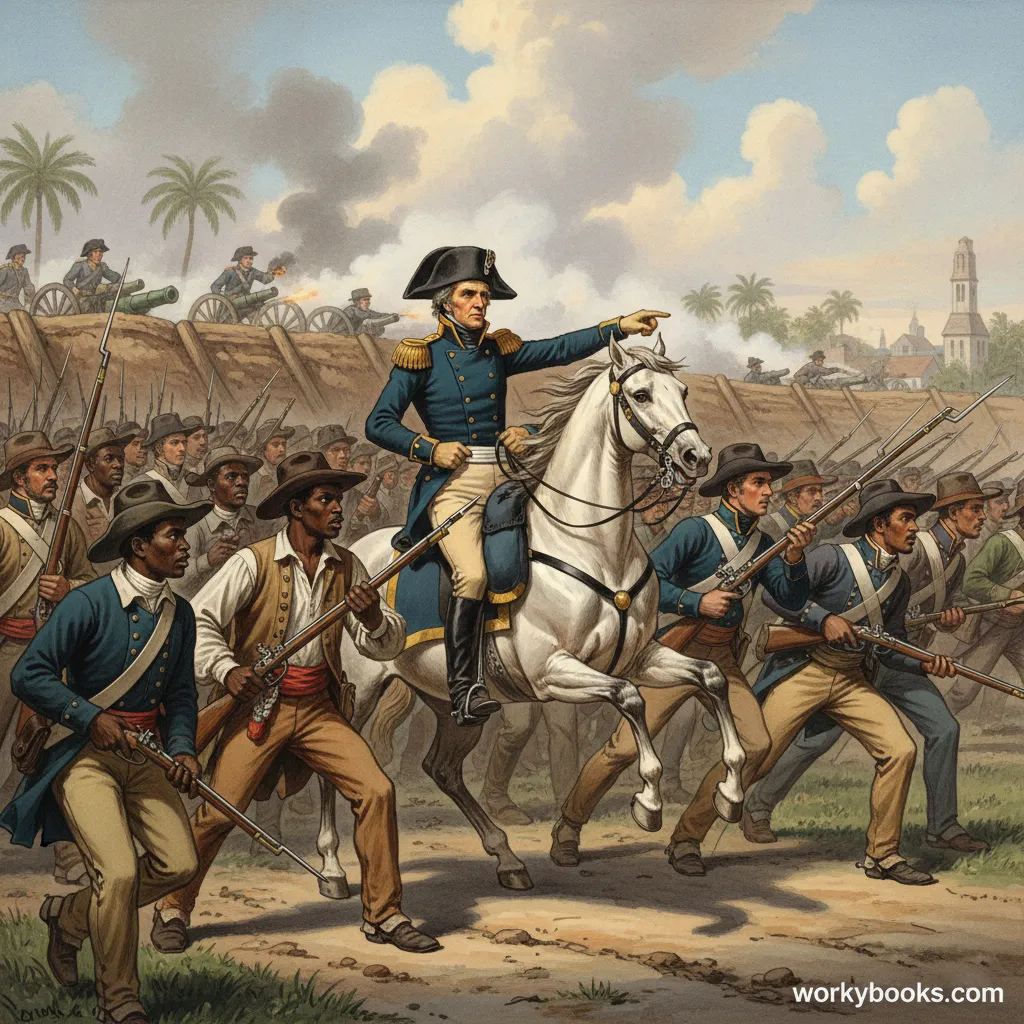
Andrew Jackson was a Tennessee military leader who commanded the American forces at the Battle of New Orleans. His leadership and strategic decisions were crucial to the American victory:
Preparation
Jackson built strong defensive positions along the Rodriguez Canal
Diverse Forces
He assembled a diverse army including regular soldiers, militia, free African Americans, and pirates
Strategic Defense
Jackson used the terrain to his advantage, forcing the British to attack across open ground
Jackson's victory at New Orleans made him a national hero and eventually helped him become the seventh President of the United States in 1829. His leadership style was characterized by determination, decisiveness, and the ability to inspire his troops.
The Role of Jean Lafitte
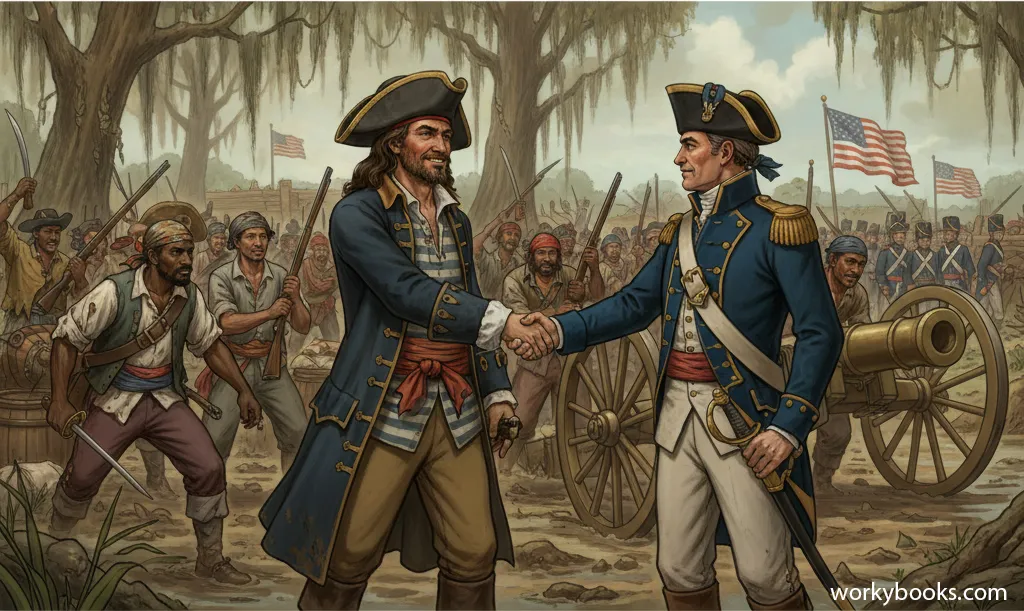
Jean Lafitte was a French pirate and privateer who operated in the Gulf of Mexico. When the British approached New Orleans, they tried to recruit Lafitte and his men to help their cause. However, Lafitte chose to support the Americans instead.
Lafitte and his pirates provided several key advantages to the American forces:
- Knowledge of the local waterways and terrain
- Additional fighters with combat experience
- Supplies and weapons from their stockpiles
- Artillery expertise that helped man the American cannons
In exchange for their help, President James Madison later issued a pardon for Lafitte and his men for their previous piracy. Lafitte's decision to support the Americans proved crucial to their victory.
The Treaty of Ghent
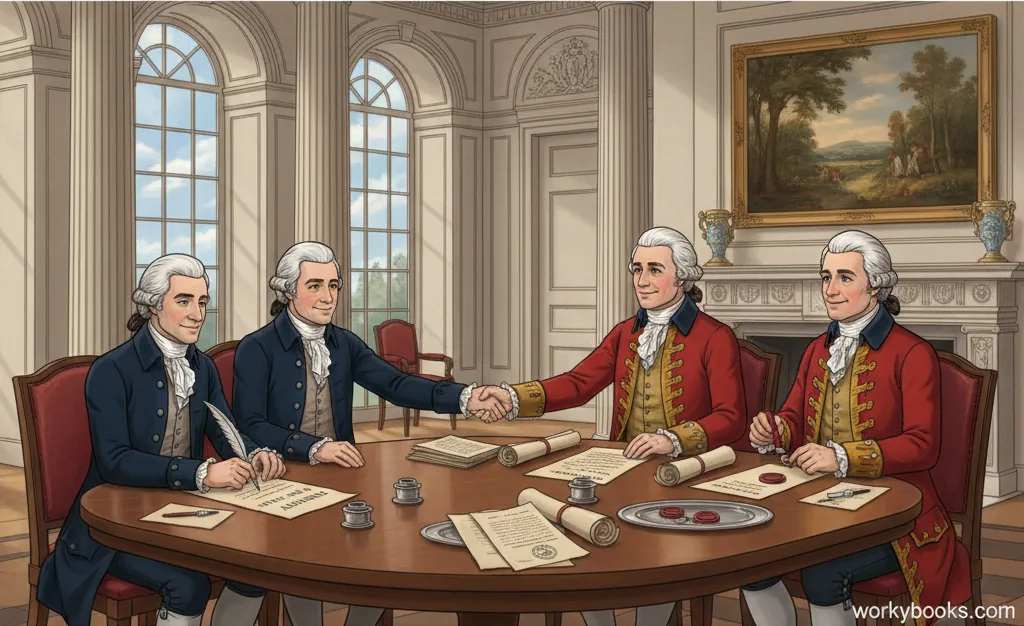
The Treaty of Ghent was the peace agreement that officially ended the War of 1812. It was signed in Ghent, Belgium, on December 24, 1814. The treaty essentially restored relations between the United States and Great Britain to their pre-war status.
Key provisions of the treaty included:
- Return of all captured territory
- Establishment of a commission to settle the border between the United States and Canada
- Agreement to end the fighting with Native American tribes
- No mention of the issues that started the war (impressment, trade restrictions)
Because communication in the early 19th century was slow, news of the treaty did not reach North America until February 1815. This meant that the Battle of New Orleans was fought after the war had officially ended, though neither side knew it at the time.
The British Army
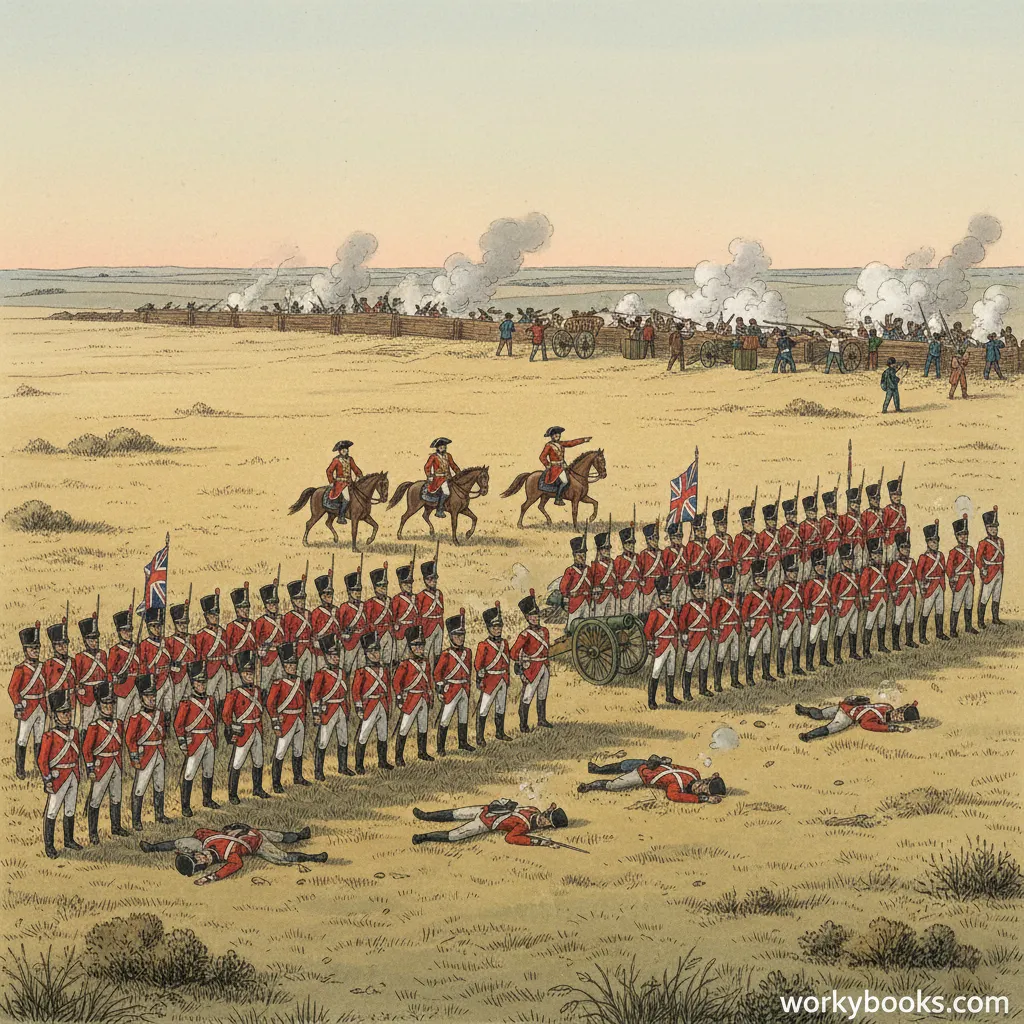
The British Army that attacked New Orleans was a formidable force. Many of these soldiers were veterans of the Napoleonic Wars in Europe, which had just ended. They were experienced, well-trained, and confident after recent victories against Napoleon's armies.
The British plan was to capture New Orleans and gain control of the Mississippi River, which would have given them significant leverage in peace negotiations. However, several factors worked against them:
Unfamiliar Terrain
The British were not familiar with the Louisiana swamps and waterways
Strong Defenses
Jackson had built strong defensive positions that were difficult to attack
Weather Conditions
Heavy fog on the morning of the main attack confused the British troops
The British defeat at New Orleans was surprising given their military experience. The battle demonstrated that determination and strategic positioning could overcome numerical and experiential advantages.
Battle of New Orleans Quiz
Test your knowledge about the Battle of New Orleans! Answer all 5 questions to see how much you've learned.
Frequently Asked Questions
Here are answers to common questions about the Battle of New Orleans:
Battle of New Orleans Trivia
Discover amazing facts about the Battle of New Orleans!
Lopsided Casualties
The Americans suffered only about 60 casualties (13 killed, 39 wounded, 19 missing), while the British had over 2,000 (including 291 killed, 1,262 wounded, and 484 captured).
Diverse American Army
Jackson's forces included U.S. Army regulars, state militia, free African Americans, Choctaw tribesmen, and Jean Lafitte's pirates - one of the most diverse American armies up to that time.
Battle Inspired a Song
In 1959, Johnny Horton recorded "The Battle of New Orleans," which became a number one hit and won a Grammy Award for Best Country & Western Recording.
Weather played a role
Heavy morning fog on January 8 confused the British troops and delayed their attack, giving American artillery more time to target them as they advanced.


